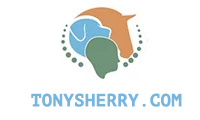Horses are remarkable creatures, not just for their beauty and strength, but for their ability to communicate with us on a deeply emotional level. As someone who has spent years working closely with these majestic animals, I’ve come to understand that they hold their emotions not just in their eyes and actions, but also in their muscles. This understanding has not only transformed my approach to horse care but has also impacted how I navigate my personal and professional life. I hold the belief that every therapist brings a unique approach to their practice, just as each of us is inherently distinct. This individuality is a key factor in why therapists often achieve varying results. It underscores the importance of tailoring treatments to suit the specific needs of each client, as not all individuals require the same approach.
One of the most profound lessons I’ve learned from horses is how to interpret their emotions through the tension in their muscles. Over time, with practice and the willingness of the horses to teach me, I’ve become attuned to where they may be feeling discomfort or emotional stress within their bodies. This intuition has allowed me to provide treatments that not only address physical issues but also help release emotional tension stored in their muscles.
The feedback I receive from horse owners often reinforces this understanding. Comments like “they don’t like men, but they love you” or observations of how much a horse is enjoying a particular treatment session speak volumes about the emotional connection between horses and humans. Witnessing transformations such as a horse displaying a newfound contentment or affection after releasing muscle tension is a testament to the power of acknowledging and addressing emotional wellbeing in animals.
Scientifically, it’s well-documented that both humans and animals can hold emotions in their muscles. Constant discomfort and tension not only affect physical health but can also take a toll on mental wellbeing. By helping horses release tension in their muscles, I’ve observed firsthand how this can lead to a significant improvement in their overall demeanour and mental state.
Recently, I had the privilege of working with a client whose horse had sustained a severe back injury. Despite multiple visits from a chiropractor and veterinary intervention, the horse continued to experience pain and discomfort. When I began working with the horse, I could sense the tension in her muscles and knew there was emotional as well as physical trauma to address.
Using my non-invasive approach, I worked to release the tension and provide relief for the horse. The transformation was remarkable. Within a short period, the horse responded positively to the treatments, displaying signs of comfort and relaxation. The owner’s testimonial speaks volumes about the impact of addressing emotional wellbeing in horses and the transformative power of holistic care.
In conclusion, the emotional anatomy of horses is a profound aspect of their wellbeing that deserves recognition and understanding. By acknowledging and addressing the emotions stored in their muscles, we can truly make a difference in their lives. As I continue on this journey of learning from horses, I’m reminded daily of the depth of their emotional intelligence and the profound connection we share.

